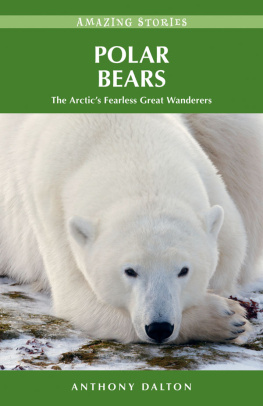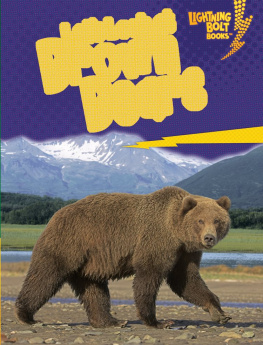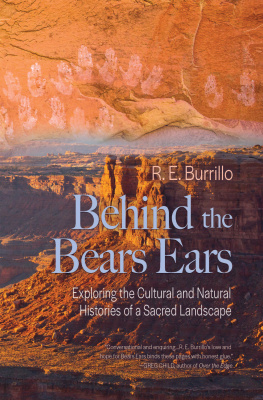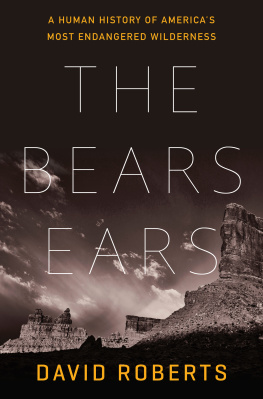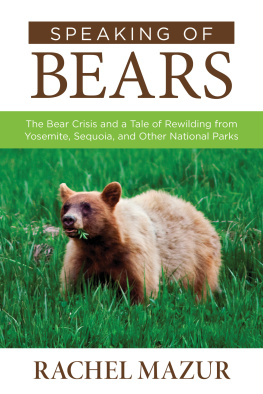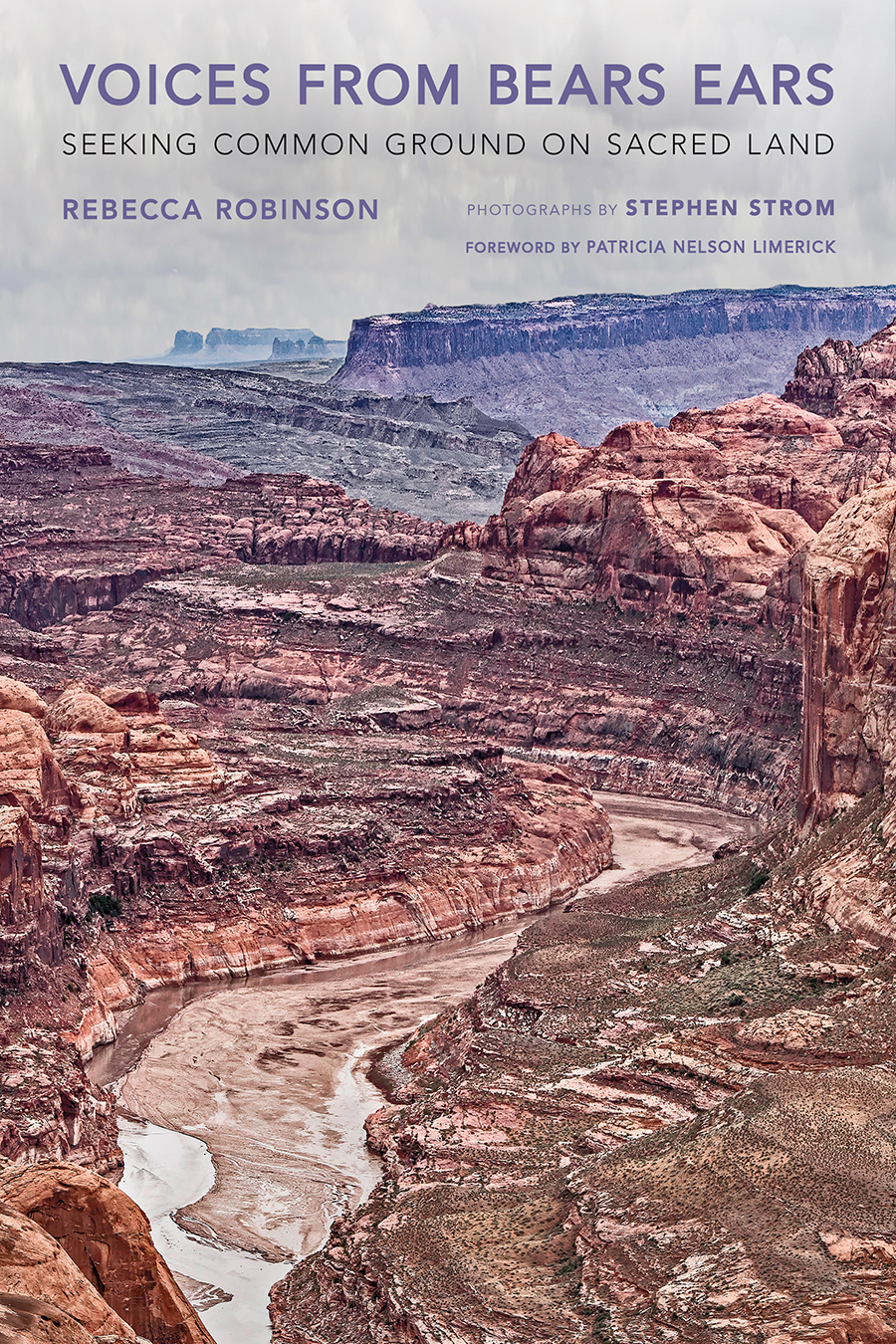
Voices from Bears Ears

Canyon, Goosenecks of the San Juan
Voices from Bears Ears
Seeking Common Ground on Sacred Land
Rebecca M. Robinson
Photographs by Stephen E. Strom
Foreword by Patricia Nelson Limerick

In association with George F. Thompson Publishing
The University of Arizona Press
www.uapress.arizona.edu
2018 by The Arizona Board of Regents
All rights reserved. Published 2018
ISBN-13: 978-0-8165-3805-8 (paper)
Cover design by Leigh McDonald
Cover photograph by Stephen Strom
Interior design by Sara Thaxton
Frontispiece: Canyon, Goosenecks of the San Juan River
The epigraph on p. v is from Secrets from the Center of the World by Joy Harjo and Stephen Strom. 1989 by The Arizona Board of Regents. Reprinted by permission of the University of Arizona Press.
References to Internet websites (URLs) were accurate at the time of writing. Neither the author nor the University of Arizona Press is responsible for URLs that may have expired or changed since the manuscript was prepared.
Visit BearsEarsCountry.com, for curated news coverage, analysis, and additional context for interpreting a complex and nuanced story.
Library of Congress Cataloging-in-Publication Data
Names: Robinson, Rebecca, 1984 author. | Strom, Stephen, photographer. | Nelson, Patricia, writer of foreword.
Title: Voices from Bears Ears : seeking common ground on sacred land / Rebecca M. Robinson ; photographs by Stephen E. Strom ; foreword by Patricia Nelson Limerick.
Description: Tucson : The University of Arizona Press, 2018. | Includes bibliographical references and index.
Identifiers: LCCN 2018009197 | ISBN 9780816538058 (pbk. : alk. paper)
Subjects: LCSH: Bears Ears National Monument (Utah) | Bears Ears National Monument (Utah)Pictorial works.
Classification: LCC F832.S4 R63 2018 | DDC 979.2/59dc23 LC record available at https://lccn.loc.gov/2018009197
Printed in the United States of America
This paper meets the requirements of ANSI/NISO Z39.48-1992 (Permanence of Paper).
Guide to the types of links in this enhanced e-book:
Links to panoramas are indicated in GREEN .
Links to maps are indicated in ORANGE .
Links to videos are indicated in RED .
Links to audio files are indicated in PURPLE .
Links to websites are indicated in BLUE .
All landscapes have a history, much the same as people exist within cultures, even tribes. There are distinct voices, languages that belong to particular areas. There are voices inside rocks, shallow washes, shifting skies; they are not silent. And there is movement, not always the violent motion of earthquakes associated with the earths motion or the steady unseen swirl through the heavens, but other motion, subtle, unseen, like breathing. A motion, a sound, that if you allow your inner workings to stop long enough, moves into the place inside you that mirrors a similar landscape; you too can see it, feel it, hear it, know it.
Joy Harjo, Secrets from the Center of the World

Badlands, near Red Canyon (aerial photo)
Contents
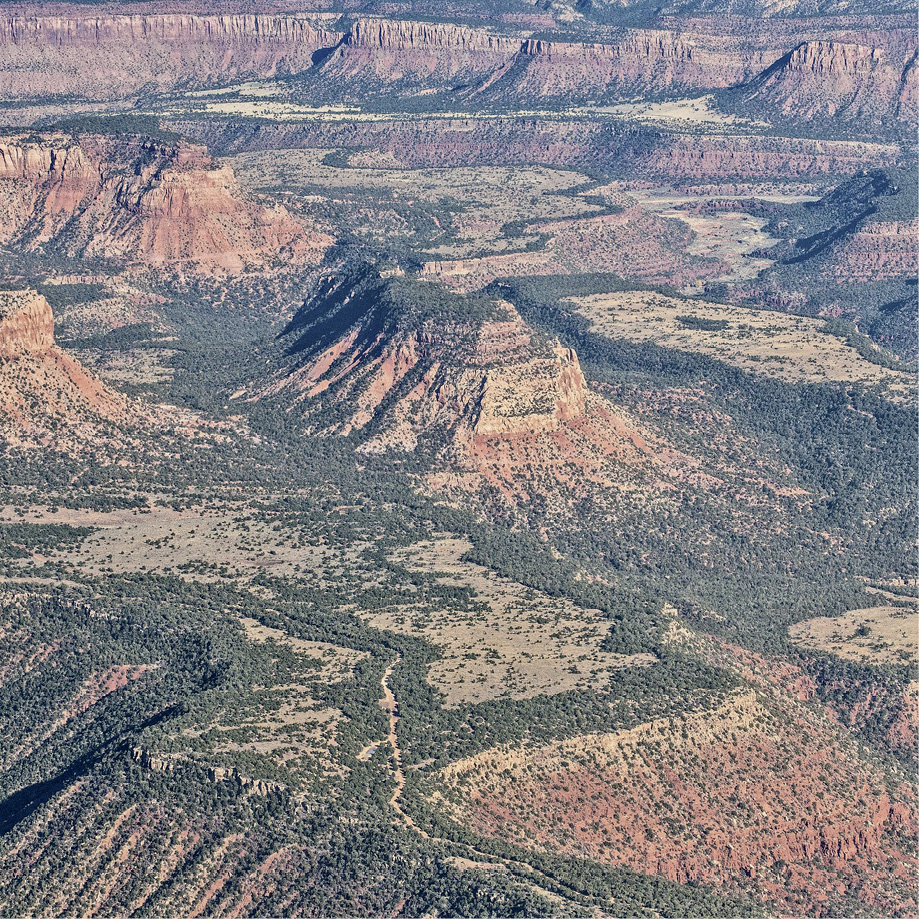
Seven Sisters Buttes
Foreword
Bears Ears and the Redemption of the Confounded
You and I ought not to die, before We have explained ourselves to each other.
John Adams to Thomas Jefferson, July 15, 1813
I have thus stated my opinion on a point on which we differ, not with a view to controversy, for we are both too old to change opinions which are the result of a long life of inquiry and reflection, but on the suggestion of a former letter of yours, that we ought not to die before we have explained ourselves to each other.
Thomas Jefferson to John Adams, October 28, 1813, from Lester J. Cappon, ed., The Adams-Jefferson Letters
Blessed are the peacemakers, for they shall be called the children of God.
Matthew 5:9
In the mid-2010s San Juan County in southern Utah has become the setting for a collision of individuals and groups who claim a strong sense of place and who are thereby locked in intractable opposition.
In the early 1990s, in a phase of hopeful cheer that seems regrettably distant, many earnest people who love the American West got swept up in a wave of enthusiasm for the benefits of an ever-growing adoption of a sense of place. People who held this sense of connection were to gain a grounded sense of mission: recognizing the West as our chosen home, we would thereby be called to serve as the grateful stewards and guardians of the land where we had found our bearings. The most audible and articulate advocates of a sense of place wisely chose not to raise a confounding question: What should we expect when dissimilar and conflicting senses of place are directed, with force and conviction, at the same place?
The controversy over the proposed Bears Ears National Monument in southern Utah seems to offer a clear and direct answer to that question:
Expect groups holding differing senses of place to collide with each other. Expect antagonism and hostility to rise in intensity. Expect memories of past injuries to surge back with new force.
In the early twenty-first century bitter conflicts over the lands and resources of the American West have rattled communities in many locales, providing an abundance of evidence to validate that answer. Those who would prefer an alternative to antagonism and polarization have reason to feel constantly confoundedor, to enlist a few of the words colorful synonyms, to feel dumbfounded, staggered, bewildered, baffled, mystified, perplexed, puzzled, flummoxed, and confused.
This sets the stage for a theory I now present for its first test.
If we are going to be confounded by the proliferation of conflicts over the Wests public lands, there would surely be wisdom in taking possession of this process, calling a halt to the unrewarding custom of letting it take possession of us.
In a state of affairs that even very alert observers might miss, the story of the conflict over the proposed Bears Ears National Monument presents an improbably promising situation: because Utah has a distinctive history that confounds the conventional wisdom on western land conflicts; and because two good souls have chosen to position themselves squarely in the middle of this conflict.
The example, set by the two purposeful and very skilled confounders who collaborated to bring Voices from Bears Ears into being, presents an opportunity we should not let slip from our reach.
Moved by a deep and intense sense of place, photographer Stephen Strom and his granddaughter, writer Rebecca Robinson, ventured into a setting where people have devoted years to the successful project of casting each other as antagonists. Strom and Robinson resolved to forswear predetermined conclusions and to refuse to hold their own perspectives and points of view with complacency. Moving with grace, in all senses, among this divided population, these exemplary confounders set out to capture the words of residents of San Juan County, as well as tribal members and environmentalists across the Colorado Plateau, so that those voices could be heard with openness, compassion, and understanding for what they hold sacred.
Next page

